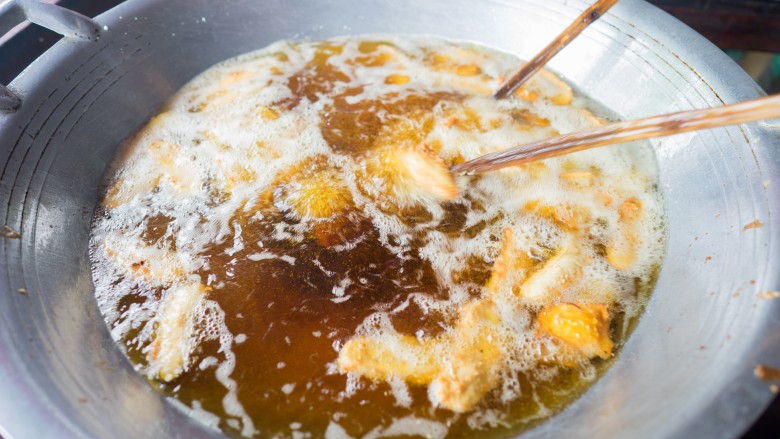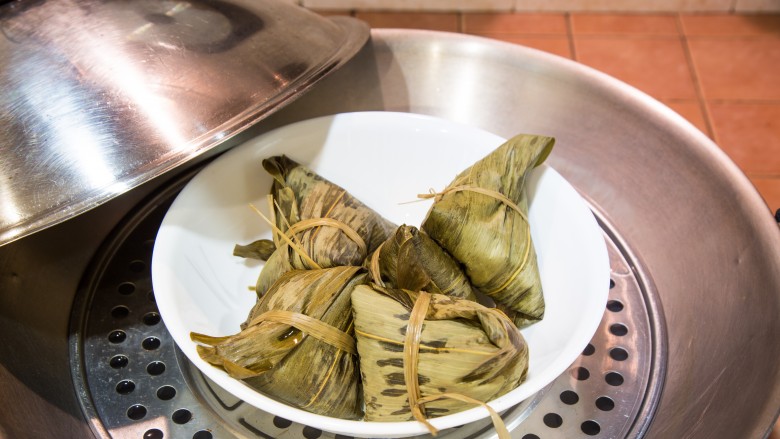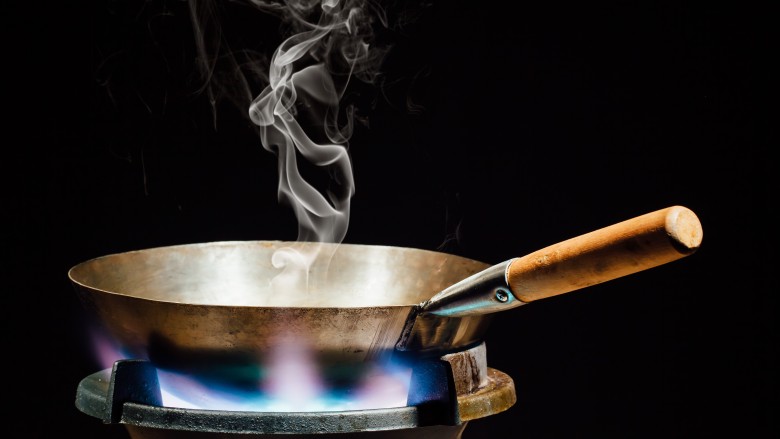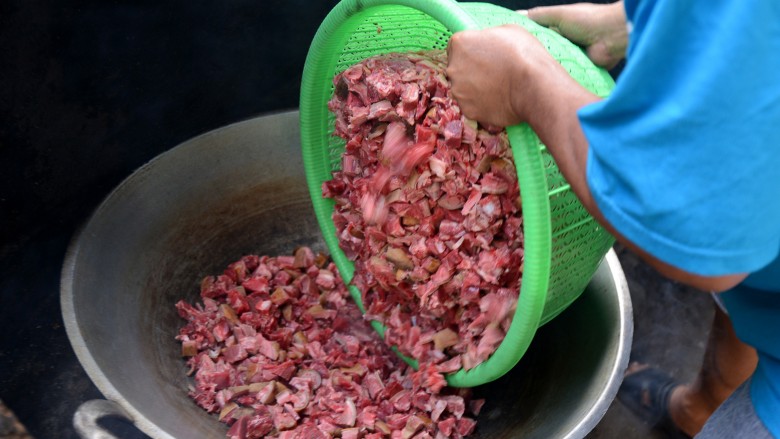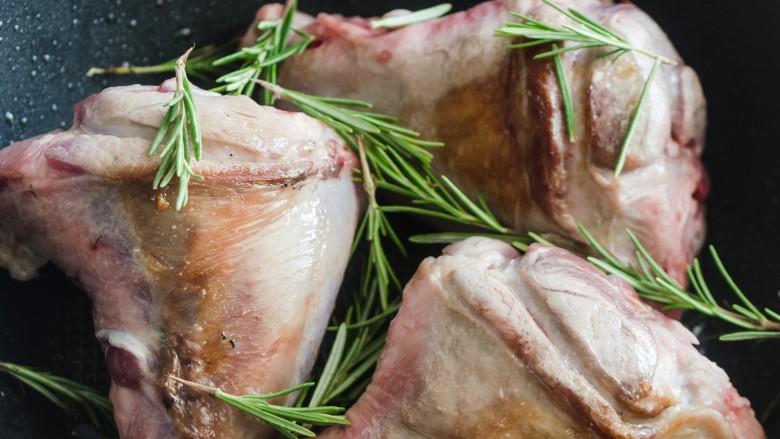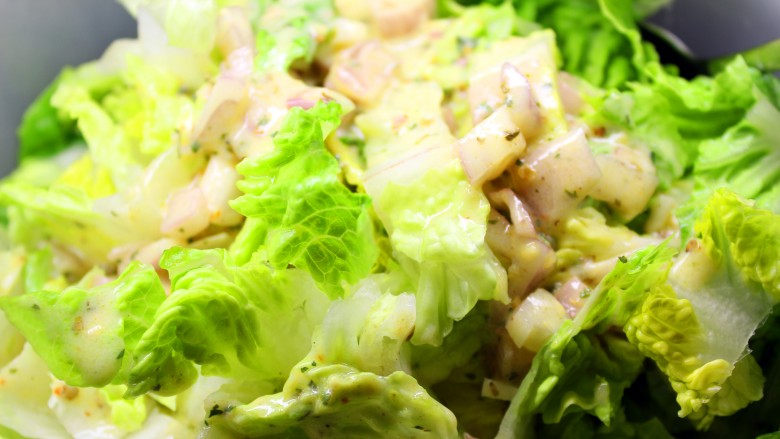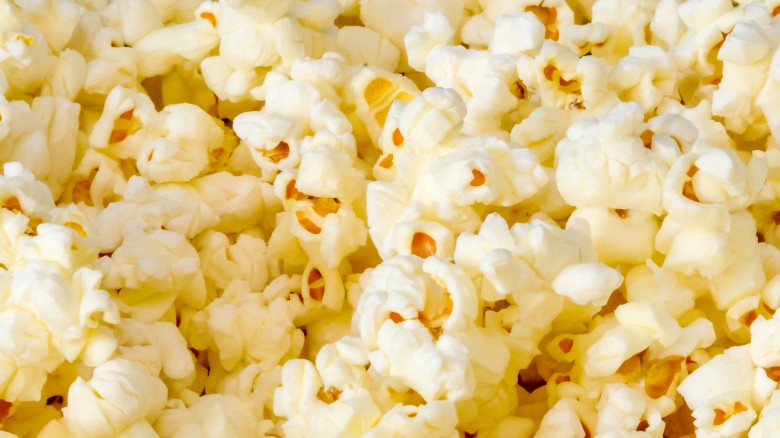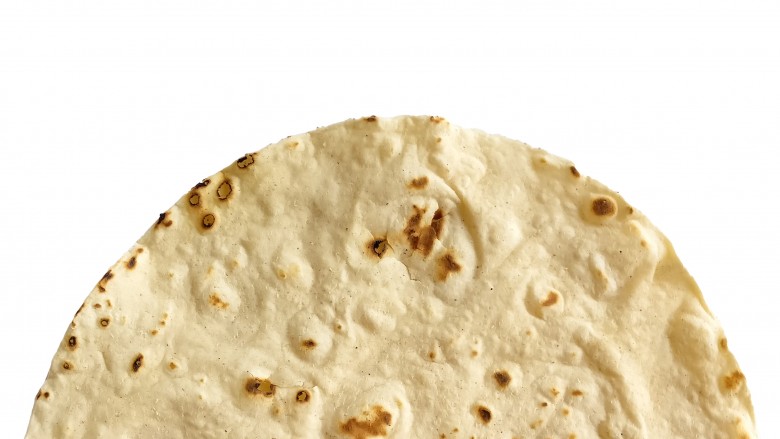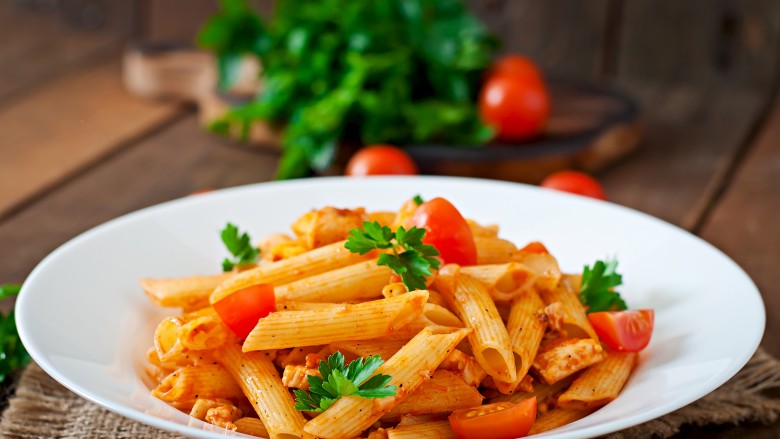Ways To Use Your Wok You\'ve Never Thought Of
A wok is a kitchen must-have for cooks at any level. Unlike fancy copper pots or techy appliances, this one tool is humble, egalitarian, and indispensable. Versatile and inexpensive, the wok might just be the best pan investment you make. Sure, it's perfect for stir-frying your heart out, but you may not realize that this oddly shaped pan with its high sides is also ideal for many other culinary uses. From deep-frying and flash-frying to making popcorn and warming tortillas, your wok can help make everyday meal prep a whole lot easier. Not sure what else to do with a wok besides making beef and broccoli stir-fry? Read on to discover new ways to utilize this underrated kitchen pan.
Deep-frying
I used to avoid deep-frying at home whenever possible. Without a proper deep-fryer, the exercise always devolved into a huge mess and wasting copious amounts of oil for a handful of fries — until I discovered that I could use my wok to deep-fry. While I associated this uniquely conical pan with Asian stir-frys, I was neglecting its myriad other possibilities, including the fact that they make the whole experience of frying foods so much more pleasant.
If you've ever tried frying anything in a large pot or Dutch oven, you've probably already found out that it creates a ton of oil splatter from inside the pot onto all your clean surfaces. Since the wok has sides that come out, it's better equipped for catching those oil drips and drops, which makes a world of difference come cleanup time. And if you're wasting a lot of oil at the end, using a wok helps prevent lots of burnt bits from hanging around at the bottom of the pan the way they might congregate in the corners of a deep pot. By straining out the few burnt bits you see as you go, the oil stays cleaner, and you can use it several more times before discarding. Another bonus of deep-frying in a wok? The wide opening gives oil bubbles enough space to dissipate before boiling over, making potentially dangerous and messy situations more unlikely.
Steaming
Steaming is a simple, easy, and nutritious way to prepare vegetables. It involves cooking foods on a perforated surface (such as steamer basket) set over simmering water and covered. The wet heat created by the hot water and trapped by the lid renders the veggies perfectly crisp and tender. If you've been setting your steamer basket over an ill-fitting pot or skillet, I feel obligated to let you know there's an easier tool! Try using a wok instead.
The shape of the wok makes it a natural choice when you're looking all over your kitchen for a pan that perfectly holds your steamer basket — regardless of the size of said steamer basket. The smaller bottom of the wok is ideal for holding the simmering water without allowing it to touch the bottom of the basket, which would get your vegetables all wet. Simply set whatever basket you have over the wok filled with a modest amount of water, then cover and steam away.
Smoking
If smoking foods inside your kitchen seems a little intimidating, I feel you big time. That said, doing so in a wok inside your kitchen is whole different story. While you can't smoke huge slabs of meat using this versatile pan, you can certainly add tons of smoky flavor to more modest pieces of meat or fish. With little more than a wok, a rack, some aluminum foil, and your regular old stovetop, you can infuse your favorite dishes with irresistible flavor that approximates what you would achieve with complicated outdoor smoking techniques and equipment.
How do you use your wok to smoke foods? Good news — it's easy! First, line the bottom of the wok with foil. Add the ingredient you want to smoke — think wood chips, tea leaves, fruits, spices, sugars, or even rice. Next, turn on the heat and wait until those fragrant additions start smoking. Finally, place a rack over the wok and place your foods on top. Cover them with foil and wait. Once the foods have finished smoking, you can finish cooking them on the stove or in the oven if necessary.
Flash-frying or velveting
Flash-frying falls somewhere between stir-frying and deep-frying. The technique of quickly searing meats involves cooking them very quickly in more oil than you would use for stir-frying but less than you would use for deep-frying. The goal is to brown the ingredient slightly before removing them to cook other foods, then re-incorporating it back into the pan to finish cooking.
Simply heat the wok until it almost smokes. You want it hot! Add the oil to coat the bottom and lower half of the wok. Swirl the oil around, then add the meat you want to brown to the bottom of the pan before spreading out the pieces to help them sear evenly. When you finish flash-frying, you can drain some of the oil before cooking the other ingredients.
Braising
Are you using your wok to braise foods yet? If not, start ASAP. Braising foods usually refers to searing them to lock in flavor before cooking them in a moderate amount of liquid, whether that be water, stock, or otherwise. While wok-braising doesn't break down tenuous meat muscles and tendons the way a traditional slow-braise might, it is a great way to shorten the time frame for braising, while still rendering them deliciously tender.
Wok-braising is particularly well-suited to inexpensive root veggies and cheaper cuts of meat, which is great if you want to turn budget food into works of culinary art. Simply sear your food in a small amount of oil, then add your liquid of choice and simmer uncovered until the food is cooked and the sauce has thickened. This simple method works for any variety of ingredients, making it a highly versatile technique to have in your back pocket.
Tossing salad
The ever-handy wok isn't just good for cooking. It's also a great tool to use for all kinds of tossing. The high, flared sides means that you can add ingredients to the pan and freely stir or toss without worrying about food flying all over the place. The next time you need to to toss your leafy greens with dressing, try doing so in a wok and keep all those veggies inside the pan instead of on your countertop. Bowls are so yesterday's news. Avoid messes and make sure your salad is handsomely dressed when you utilize the wok's magical shape.
Making popcorn
Making popcorn in a wok is unexpected but also kind of brilliant if you think about it. A wok is the ideal size for preparing enough popcorn to get through that horror flick. The wok's high sides keep everything contained. Oil is evenly distributed on the bottom and up the sides, seasoning the wok while you're using it — in effect killing two birds with one stone. You get perfectly cooked popcorn without using too much oil.
Warming tortillas
Taco Tuesday just got easier, at least when it comes to warming tortillas. Instead of wrapping them in foil and heating them in your oven or frying them in tons of oil, try warming soft tortillas in your trusty wok. Simply place the tortillas on the sides and bottom of the wok over low heat and they'll get just warm enough without risk of burning. Keep the burner on low during the meal so you have warm tortillas at the ready.
Making pasta
A wok is also ideal for all your one-pot pasta dishes. You can boil your pasta directly in the wok and later also add your sauce to the noodles and toss the two together in the same pan. The high sides keep it versatile, making the work of tossing saucy pasta dishes that much easier.
Ready to see your wok in a whole new light?

